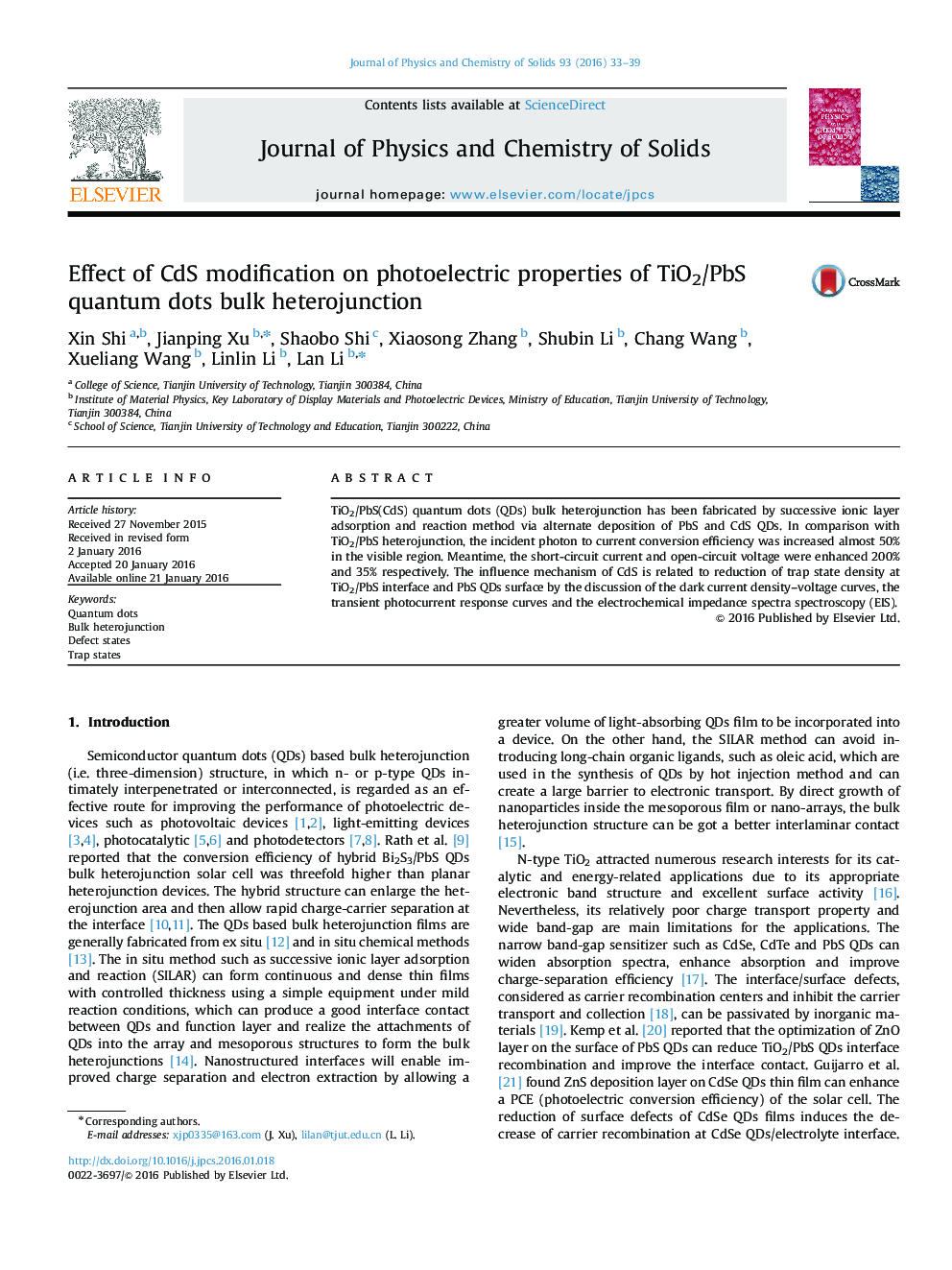| Article ID | Journal | Published Year | Pages | File Type |
|---|---|---|---|---|
| 1515283 | Journal of Physics and Chemistry of Solids | 2016 | 7 Pages |
•The TiO2/PbS(CdS) QDs bulk heterojunction was fabricated by SILAR method.•The additional CdS improved the photoelectric conversion properties.•The CdS modification can reduce trap states and carriers recombination.
TiO2/PbS(CdS) quantum dots (QDs) bulk heterojunction has been fabricated by successive ionic layer adsorption and reaction method via alternate deposition of PbS and CdS QDs. In comparison with TiO2/PbS heterojunction, the incident photon to current conversion efficiency was increased almost 50% in the visible region. Meantime, the short-circuit current and open-circuit voltage were enhanced 200% and 35% respectively. The influence mechanism of CdS is related to reduction of trap state density at TiO2/PbS interface and PbS QDs surface by the discussion of the dark current density–voltage curves, the transient photocurrent response curves and the electrochemical impedance spectra spectroscopy (EIS).
Graphical abstractThe figure shows charge transport schematic diagram for TiO2/PbS(CdS) heterojunction. (The red crosses represent the blocked charge transport process.)Figure optionsDownload full-size imageDownload as PowerPoint slide
